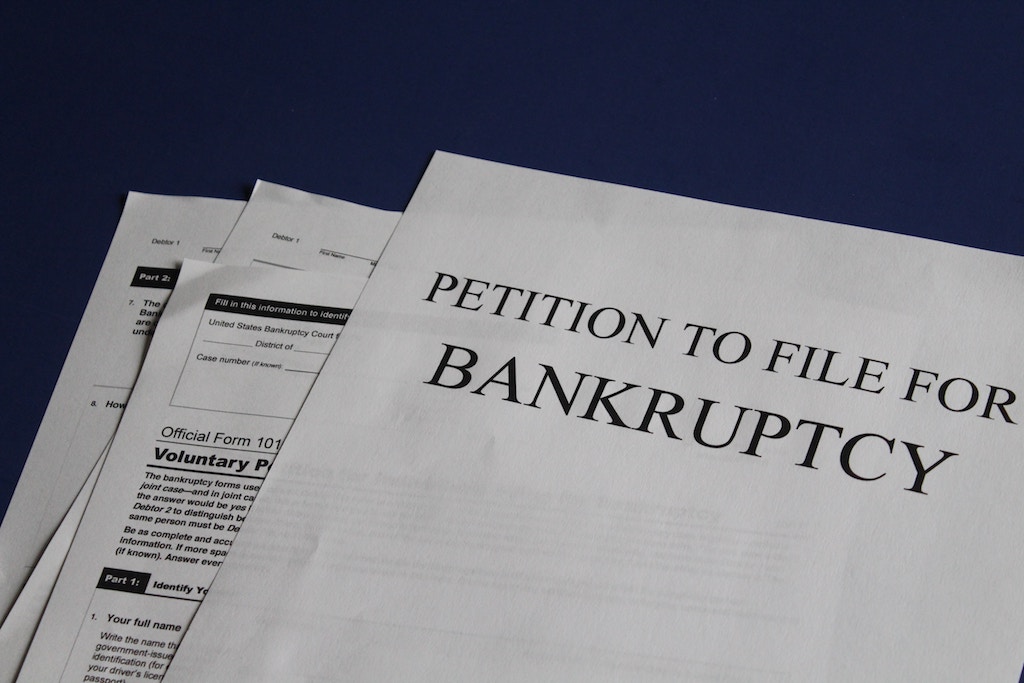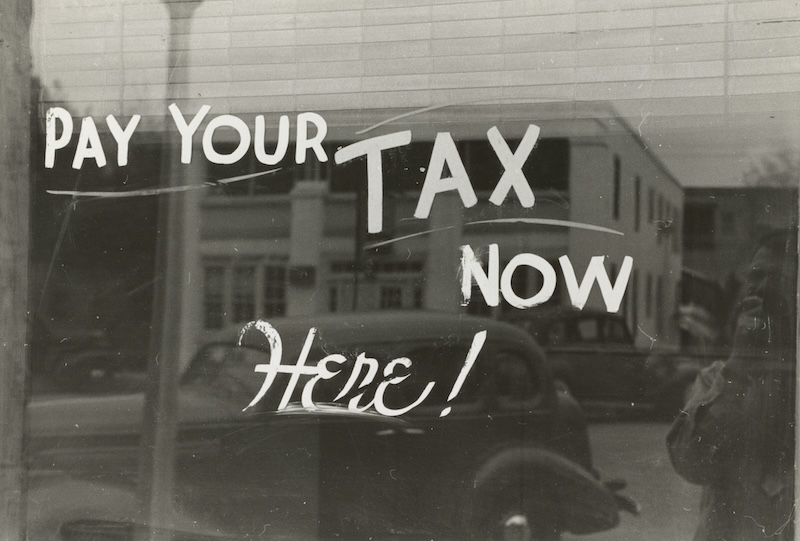Capitalism, a Free Market and Creative Destruction
By Bob Peters || May 20, 2023
The lifespan of a business is fragile
When you invest in equity securities of businesses by buying either an individual company stock or a low cost, highly diversified Exchange Traded Fund you are buying a piece of a business. In an earlier blog post I pointed out how price and value are related, but different. Recall that a business is worth all of its future cash flows discounted back to today.
I strongly believe that the vast majority of your investing wisely plan should be purchasing low cost, highly diversified ETF’s rather than individual stocks and this post, I hope, will help make a few points to support that opinion. The lifespan of a business is fragile so let’s take a bit of a dive into why this is the case by looking at Capitalism, Free Markets and Creative Destruction.
Capitalism
Capitalism is an economic system based on the private ownership of the means of production and the free exchange of goods and services in a competitive market. Capitalism encourages innovation, entrepreneurship and economic growth by rewarding individuals for their efforts and risks. Capitalism also relies on the concept of creative destruction, which means that new and better products and services replace the old and obsolete ones, leading to constant improvement and progress.
However, capitalism also has some drawbacks and limitations. Capitalism, left unchecked by laws and regulations, can create inequality, exploitation, environmental degradation and social instability. Capitalism can also be prone to crises, recessions and bubbles, as the market forces can sometimes be irrational, speculative and unpredictable.
Socialism and Communism
Socialism and communism are alternative economic systems that challenge the principles and outcomes of capitalism. Socialism is an economic system based on the social ownership of the means of production and the democratic planning of the economy. Socialism aims to reduce inequality, promote social justice and meet the basic needs of all people but removes incentives for people and is much more restrictive on individual freedoms.
Communism is an economic system based on the common ownership of the means of production and the abolition of private property, money and markets. Communism is a radical form of socialism that seeks to create a classless, stateless and moneyless society where everyone is equal and free. Communism is based on the idea that human nature is cooperative and altruistic, and that people can work together for the common good without any external incentives or coercion. There have been a few countries that have pursued this form of government but none have successfully raised the standard of living of their citizens compared to capitalist societies.
The main differences between the two systems
The main differences between capitalism and socialism/communism are:
– The ownership of the means of production: private vs government
– The role of the market: invisible hand of the market vs. centrally controlled by the government
– The distribution of income and wealth: unequal vs equal
– The incentives for production: profit vs government determined “need”
– The degree of individual freedom: high vs low
Each economic system has its own advantages and disadvantages, strengths and weaknesses, supporters and critics. In practice, no country utilizes a pure form of capitalism, socialism or communism. The US and most democratic countries lean further towards a free market but have laws and regulations that attempt to balance the invisible hand of the market against societal norms and values. Countries like China utilize a hybrid between capitalism and centrally planned economics where private ownership exists inside of a system where government has greater control over economic activities.
Let’s now expand a bit more on how creative destruction impacts the life cycle of businesses and then give some statistics that further support why, in my opinion, you have a better opportunity to build wealth by investing in broad based, low-cost Exchange Traded Funds rather than picking individual stocks.
More about Creative Destruction to illustrate why low cost diversified Exchange Traded Funds are better for the average person
Our economic system leans further towards free market capitalism with less government control. While our government establishes laws that dictate the rules under which businesses can legally operate, these laws do not directly pick which companies will win or lose. I say directly because laws do create environments where some businesses may have an advantage. For example, in a highly regulated industry such as banking, the economic cost of compliance with laws favors bigger financial institutions that can spread the cost of compliance over a larger customer base. Over time, a business with less profitability will be under pressure from its shareholders leading to a sale, merger or failure.
Creative Destruction occurs when the buyers of a businesses products and services are no longer sufficiently valued by its customers. There are many examples of this…the pony express riders delivering mail were disrupted by railroads and telegraph lines. The telegraph was disrupted by the ability to make a voice call over wired telephone lines. Horse transportation was disrupted by the automobile. Businesses that provided wired telephone lines were disrupted by cellular phone companies. You can find thousands of examples where businesses that were successful for many years and ultimately failed as their customer base lost interest in their product and chose a better solution.
To further illustrate just how precarious corporate survival can be only 60 companies that were in the S&P 500 in 1955 existed in 2017. That’s only 12%. Stop to think about this for a minute. Of the largest 500 US publicly traded companies, only 12% remained in existence 62 years later! These businesses were amongst the largest businesses in the country and were unable to adapt to changing customer preferences.
Let’s take a look at some big businesses that failed
Let’s take a look at a few businesses that were once large and dominant in their industries but ultimately could not survive:
– Blockbuster Video (1985 – 2010): Long before streaming services were available, folks would drive to a video rental store and rent VHS movies. The dominant company was Blockbuster Video and was very successful for many years. However, the video rental giant failed to keep up with the rise of online streaming services like Netflix and Hulu, and declined several offers to buy Netflix in the early 2000s. Blockbuster filed for bankruptcy in 2010 and closed most of its stores by 2014.
– Polaroid (1937 – 2001): Long before the advent of the smart phone and digital technologies pictures were taken by using cameras with 35mm film. During this “film age”, Polaroid developed a camera that allowed the instant printing of a photograph rather than needing to wait for a roll of film to be developed which may have taken a week or longer. The instant camera company was once a leader in innovation and photography but failed to embrace the digital revolution and compete with new rivals like Kodak and Fuji. Polaroid filed for bankruptcy in 2001. The brand name was later licensed to other manufacturers of digital cameras and printers.
– Toys R Us (1948 – 2017): When I was a kid Toys R Us was the go-to retail store for toys. It was a big box retailer with just about every toy available to purchase. Heaven for a kid. The toy retailer was once the dominant force in the industry but faced increasing competition from online retailers like Amazon and Walmart, as well as changing consumer preferences for electronic and interactive toys. Toys R Us also struggled with a heavy debt load from a leveraged buyout in 2005. The company filed for bankruptcy in 2017 and liquidated its US operations in 2018.
– Pan Am (1927 – 1991): The iconic airline was once a symbol of glamour and prestige, but faced several challenges in the 1970s and 1980s, such as deregulation, rising fuel costs, terrorism, and competition from low-cost carriers. Pan Am also made some costly mistakes, such as selling its profitable Pacific routes to United Airlines and investing in the ill-fated Concorde supersonic jet. Pan Am filed for bankruptcy in 1991 and ceased operations later that year.
– Borders (1971 – 2011): The bookstore chain was once a major player in the book industry but failed to adapt to the rise of e-commerce and e-books. Borders outsourced its online sales to Amazon instead of developing its own website and invested heavily in physical stores and CDs at a time when consumers were shifting to digital formats. Borders filed for bankruptcy in 2011 and closed all of its stores by the end of that year.
– Pets.com (1998 – 2000): The online pet supplies retailer was one of the most notorious victims of the dot-com bubble. Pets.com raised over $300 million from investors and spent millions on advertising but failed to generate enough revenue to cover its costs. Pets.com also faced fierce competition from other online pet retailers, as well as brick-and-mortar stores. Pets.com shut down in 2000 after only 21 months of operation.
– Compaq (1982 – 2002): The computer company was once the largest PC manufacturer in the world, but lost its edge to rivals like Dell, HP, and IBM, who offered lower prices, better customer service, and more innovation. Compaq also made some strategic blunders, such as acquiring Digital Equipment Corporation for $9.6 billion in 1998, which distracted the company from its core business. Compaq was acquired by HP in 2002.
The list goes on and on. These businesses failed due to an inability to adapt to changes in customer preferences. Now let’s look at a few businesses that failed due to fraud:
– Enron: This energy-trading company collapsed in 2001 after revealing that it had overstated its earnings for several years. It was one of the biggest accounting scandals in history and led to the bankruptcy of the company and its auditor, Arthur Andersen.
– Theranos: This biotech startup claimed to have developed a revolutionary blood-testing technology that could perform hundreds of tests with a few drops of blood. However, it turned out that the technology was unreliable, inaccurate, and fraudulent. The company’s founder, Elizabeth Holmes, and her former partner, Ramesh Balwani, have both been convicted of multiple fraud counts.
– Wirecard: This German payment processing company admitted in 2020 that it had falsified its accounts and that 1.9 billion euros ($2.1 billion) of its cash did not exist. The company filed for bankruptcy and its former CEO, Markus Braun, was arrested on suspicion of market manipulation and accounting fraud.
– WorldCom: This telecommunications giant filed for bankruptcy in 2002 after disclosing that it had inflated its revenues and assets by billions of dollars. It was the largest corporate fraud case in U.S. history at the time and resulted in the conviction of several executives, including former CEO Bernard Ebbers.
– FTX: This cryptocurrency trading platform was accused in 2022 of defrauding its investors by diverting funds from FTX to another company, Alameda Research, both owned by Sam Bankman-Fried. The U.S. Securities and Exchange Commission filed charges against Bankman-Fried and other senior executives, who are awaiting trial in 2023.
The Story of Enron and Vanalco
There is one more example worth mentioning and where I had personal involvement. I was the banker for a privately owned company by the name of Vanalco. Vanalco operated one aluminum smelter on the Columbia River in Washington State. The company was purchased by four individuals around 1987, it was managed well and had operated very successfully. The story takes an ominous turn.
Around June of 2000 the price of Bonneville Power Authority electricity shot up over 1,000% overnight and since electricity represented such a high percentage of the cost to produce aluminum the plant could not produce aluminum at a price that was profitable. In a few weeks the business was in bankruptcy and ceased to operate. On first blush you might think that this was due to poor management since they did not identify the risk of rising electricity prices, but this would not be a fair conclusion. The price of electricity skyrocketed due to the fraudulent action of Enron. Yes, that same company that I mentioned above that failed in 2001. So, the takeaway is that sometimes businesses fail because actions taken, legally or illegally, by other businesses which are out of managements’ control.
Business life spans are getting shorter
There is another trend worthy of observation. The average lifespan of large US business has declined from 61 years in 1958 to less than 18 years in 2016. Creative destruction at work.
Another view: Public vs. Private Information
Business whose stock is available to purchase by the public must make information available to the public. Regulation Fair Disclosure dictates that public companies must immediately release material information to all investors which is usually done via the company issuing a press release or the submission of financial reporting. Companies can release material information to bankers who are not allowed to buy or sell the stock (insider trading laws) and who are subject to confidentiality agreements. Bankers, who provide companies with debt that is not publicly traded, often receive detailed five-year financial forecasts. These forecasts are not available to public investors.
From my experience, in hindsight, many of these forecasts are overly optimistic. The difficulty of businesses to meet their five-year forecast underscores just how difficult it is to see five years in the future, even for those senior executives who are responsible to navigate the competitive landscape. We know that the value of a business is the discounted future cash flows of the business (largely driven by profitability). Now think about this. The value of the business is not limited to the next five years of cash flows. Nope. It’s generally an estimate of the next 10 years of cash flows PLUS a component call terminal value. While there are various methods to calculate terminal value, we don’t need to go there.
The important takeaway
Here is the important takeaway: If the management of businesses have a hard time to forecast the next 5 years then, in my opinion, it’s virtually impossible to forecast out to 10 years plus the terminal value which is often attributable to 60+% of the total value of a business.
Businesses don’t live forever. In fact, the life span of businesses is getting shorter due to an acceleration in the creative destruction process driven by technological change. This is only a problem if you decide to pick an individual stock to own. If, on the other hand, you own a share of an ETF that owns every share of publicly traded businesses you have diversified your risk. Surely, you will own a small piece of failing businesses, but you will also own a small piece of businesses that survive and gain market share. There is no need to follow the quarterly performance of a company nor study the industry and competitors. Better to spend your time on many other needs of life than to try to decide which stock and when to buy/sell it. Remember, this is a great example where simplicity of going the diversified ETF route is a far better solution than complexity of buying individual stocks.
Recent Posts
Want More?
A wonderful meal can help you achieve financial security
Cooking Up Financial Success: The Recipe for a Secure Future By Bob Peters || March 16, 2025A memorable dinnerI had a wonderful dinner the other day. Every dish was perfect. The main dish was a perfect temperature and cooked just right. The sauce was rich and...
A trip from the present to the past: Cambodia
Understanding History tells us how we got to where we are today By Bob Peters || January 31, 2025 This blog post is light on the financial themes normally found on this site. Rigorous historical analysis can be very helpful to better understand the world we live in...
Where does all the money go?
A Deeper Dive into Government SpendingBy Bob Peters || November 4, 2024An Insurance Company with an ArmyEvery citizen should understand how he/she is taxed and how our government spends those tax dollars. As mentioned in the blog post, Historical Tax Rates,...













0 Comments